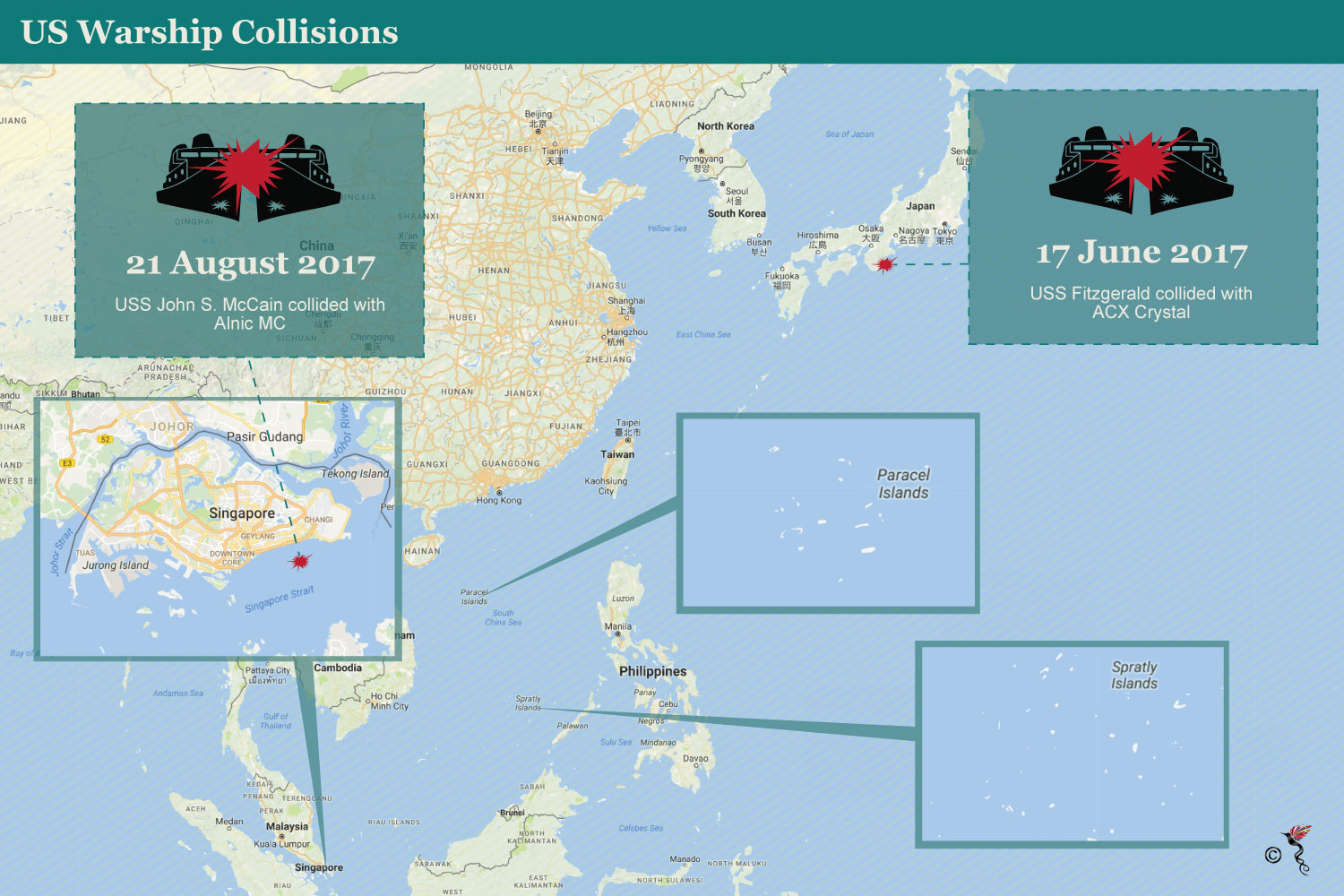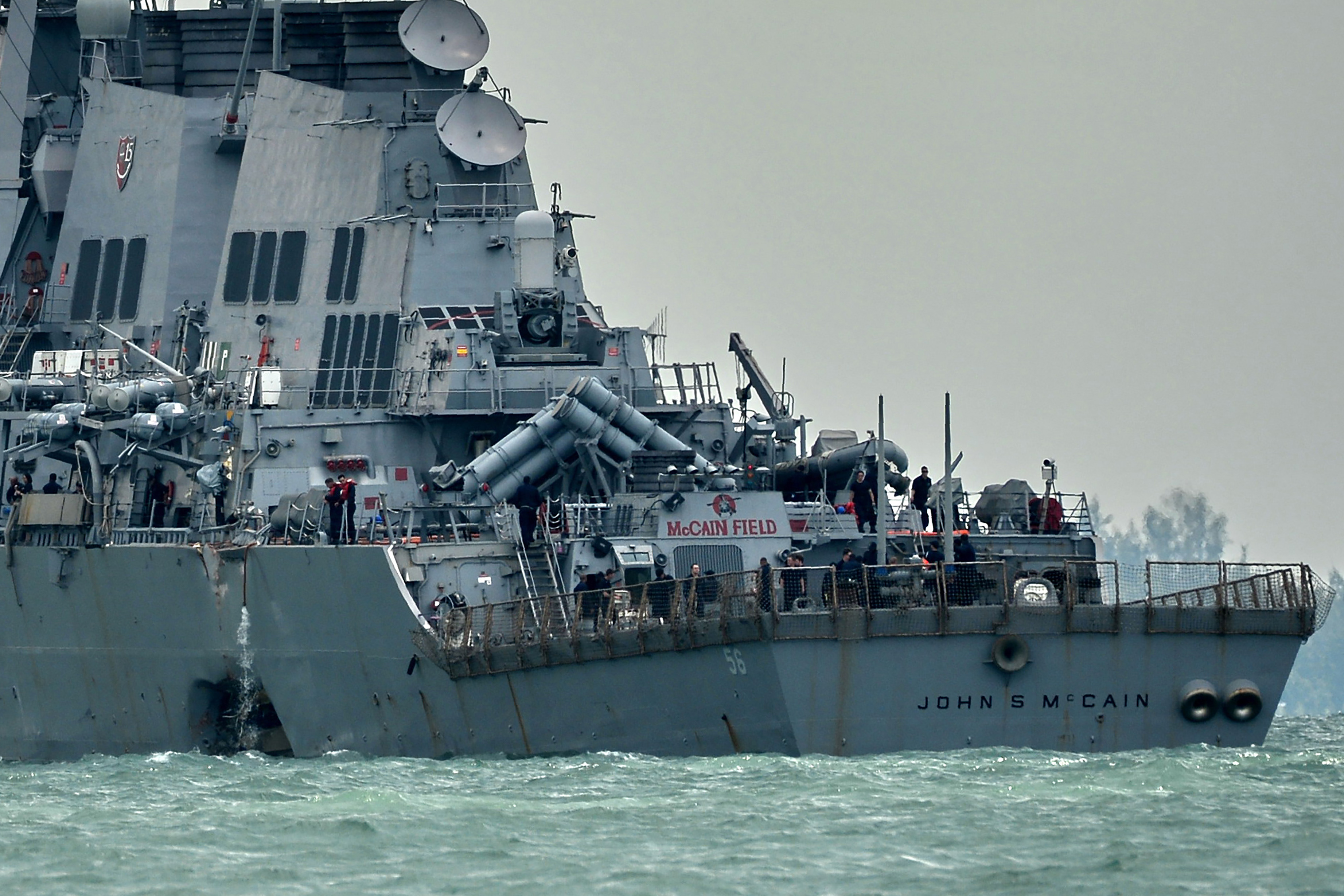The Chinese government had earlier warned the USS John S. USS McCain warship to leave their waters following its unauthorised entry into the islands and reefs of China’s Nansha Qundao in the South China Sea (SCS), saying the guided-missile destroyer was trespassing on its claimed territory – discouraging peace and security in the ASEAN region. USS McCain entered waters adjacent to the Spratly islands (where China claims indisputable sovereignty) and carried out the freedom of navigation operations without the permission of the Chinese government. The Chinese government was discontented by this action and immediately summoned their marine ships to identify and verify the US Navy ship, before warning it to leave their waters. Another guided-missile destroyer USS Dewey was also seen patrolling along the Mischief Reef of China’s SCS territory.
“The relevant acts of the US warship violated Chinese laws and international law, severely undermined China's sovereignty and security, and seriously endangered the life safety of the frontline personnel from both sides,” remarked Chinese Foreign Ministry Spokesperson Geng Shuang in a press statement thereafter.
Not long after the warning from China, the US Navy ship today (August 21, 2017) collided with Liberia’s merchant vessel (oil and chemical tanker) Alnic MC, east of Straits of Malacca and Singapore offshore. USS McCain is 505 feet long and displaces about 9,000 tonnes, while Alnic is 600 feet long and displaces about 30,000 tonnes. Both the ships were heading towards the Singapore port.
USS McCain sustained damage at the port side aft, while 10 sailors on board the ship are missing and five are injured. Search and rescue efforts are ongoing with help extended from Singapore, Malaysia and Indonesia – where all three governments are deploying their tug boats, patrol ships, helicopters and police coast guards. US has also deployed their aircrafts to the area to provide further assistance.
Mid-June (June 17, 2017), another US warship USS Fitzgerald had collided with a Filipino container ship southwest of the Japanese port city of Yokosuka. The two ships involved in the accident were the USS Fitzgerald (505 feet long and displaces 8900 tonnes) and Philippine-flag bearing container ship ACX Crystal (733 feet long and displaces 29,060 tonnes). The collision left a huge gash down the right-hand side of the ship and caused the death of seven sailors on board the Fitzgerald.

US warship collisions in the last two months.
A repetitive trend of warship accidents within the neighbourhood seem to be evident. Could these accidents have been avoided if US took heed of China’s warning that the navigation patrolling of warships in the region can cause accidents and pose danger to both parties?
China has always been firmly determined to safeguard its territorial sovereignty and maritime rights, while sustaining peace and stability in the SCS. The freedom of navigation operations has come into practice only after US president Donald Trump joined office in January 2017. US’s warship patrol provocation has been pushing the Chinese government to take-up various security measures to enhance its territorial defence.
Geng, in a press statement, urged the US “to faithfully respect China's sovereignty and security interests, as well as the regional countries' concerted efforts to uphold peace and stability in SCS, play a constructive role for this aim, and refrain from any further action that is detrimental to the China-US mutual trust and regional stability.”
Territorial disputes in the South China Sea involve both island and maritime claims among China, Taiwan and ASEAN (namely Brunei, Malaysia, the Philippines and Vietnam) of the Spratly and Paracel islands. China claims "indisputable sovereignty" over the islands based on its map which shows a nine-line segments encircling most of the SCS, called the 'nine-dash' line. Other nations also claim equal rights on segments of these pool of islands based on their respective geographical territories.
The 2002 ASEAN-China Declaration on the Conduct of Parties in the SCS states to exercise self-restraint in the conduct of activities that would escalate the disputes in the area. However, China continue to engage in large-scale land reclamation activities inconsistent with the provision – which are protested by other claimants.
In the recent China-ASEAN Foreign Ministers' Meeting held in the Philippines in conjunction with ASEAN’s 50th anniversary, both parties adopted the Framework of a Code of Conduct in the South China Sea (COC) and signed The Joint Communique. Both the COC and communique underlines the "importance of non-militarisation and self-restraint" in the disputed areas and noting concern about island-building. Both parties are trusting that the negotiations on SCS will begin soon and the whole dispute can be resolved eventually.
“The Joint Communique is a comprehensive document which describes the progress made in relation to the ASEAN-China matters and demonstrates the confidence of all parties related. China has put forward seven major initiatives for the future development of ASEAN-China relationship, which the ASEAN member countries have received it with open hands.” said Chinese Foreign Minister Wang Yi.
China currently wants the SCS issue to be considered as an ASEAN-China exclusive. China made it clear that negotiations will not push through unless "there is no major outside interference", since the "situation is generally stable". They do not want the with the interferences from other economies (namely US, Japan and Australia) that are not related, since there are already ongoing negotiations between ASEAN and China.
However, US argues that it needs to upload the freedom of navigation in SCS “to challenge excessive maritime claims in order to preserve the rights, freedoms, and uses of the sea and airspace guaranteed to all nations under international law by China because it is in international waters.”
On China-ASEAN relations, Geng explained in his statement that maritime cooperation between China and ASEAN countries are being cultivated. Both nations share the same ambition of preserving peace and stability of SCS to continue to create a sound atmosphere for China-ASEAN cooperation. At the same time, jointly guide the East Asian regional cooperation to further encourage regional integration and economic globalisation.
In view of the collision, China's Foreign Ministry Spokesperson Hua Chunying expressed her concern on the threat and hidden danger posed by the relevant incident to the safety of navigation in the SCS and relevant waters. "We hope that the relevant issue can be handled properly," she said during a press conference.
